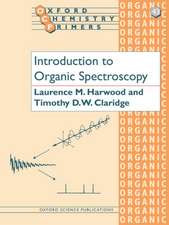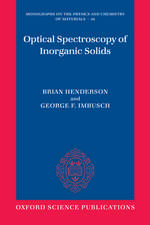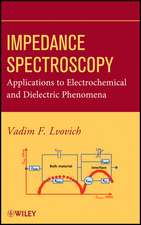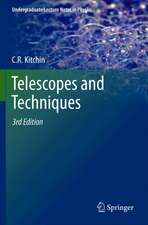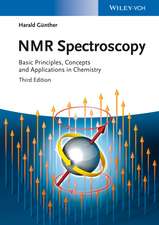The Infra-red Spectra of Complex Molecules
Autor L. Bellamyen Limba Engleză Paperback – 22 ian 2013
Preț: 396.02 lei
Nou
Puncte Express: 594
Preț estimativ în valută:
75.78€ • 79.12$ • 62.72£
75.78€ • 79.12$ • 62.72£
Carte tipărită la comandă
Livrare economică 04-18 aprilie
Preluare comenzi: 021 569.72.76
Specificații
ISBN-13: 9789401160193
ISBN-10: 9401160198
Pagini: 456
Ilustrații: XIX, 433 p.
Dimensiuni: 152 x 229 x 24 mm
Greutate: 0.6 kg
Ediția:Softcover reprint of the original 1st ed. 1975
Editura: SPRINGER NETHERLANDS
Colecția Springer
Locul publicării:Dordrecht, Netherlands
ISBN-10: 9401160198
Pagini: 456
Ilustrații: XIX, 433 p.
Dimensiuni: 152 x 229 x 24 mm
Greutate: 0.6 kg
Ediția:Softcover reprint of the original 1st ed. 1975
Editura: SPRINGER NETHERLANDS
Colecția Springer
Locul publicării:Dordrecht, Netherlands
Public țintă
ResearchCuprins
1 Introduction.- One. Vibrations of C—C and C—H linkages.- 2 Alkanes.- 3 Alkenes.- 4 Alkynes and Allenes.- 5 Aromatic Compounds.- Two. Vibrations involving mainly C—O and O—H linkages.- 6 Alcohols and Phenols.- 7 Ethers, Peroxides and Ozonides.- 8 Acid Halides, Carbonates, Anhydrides and Metallic Carbonyls.- 9 Aldehydes and Ketones.- 10 Carboxylic Acids.- 11 Esters and Lactones.- Three. Vibrations involving mainly C—N and N—H linkages.- 12 Amides, Proteins and Polypeptides.- 13 Amino-Acids, their Hydrochlorides and Salts, and Amido-Acids.- 14 Amines and Imines.- 15 Unsaturated Nitrogen Compounds.- 16 Heterocyclic Aromatic Compounds.- Four. Vibrations involving other elements; groups of inorganic origin.- 17 Nitro- and Nitroso-Compounds, Nitrates and Nitrites.- 18 Organo-Phosphorus Compounds.- 19 Halogen Compounds.- 20 Organo-Silicon Compounds.- 21 Inorganic Ions.- 22 Organo-Sulphur Compounds.- Compound Index.


